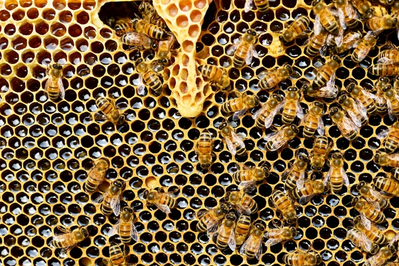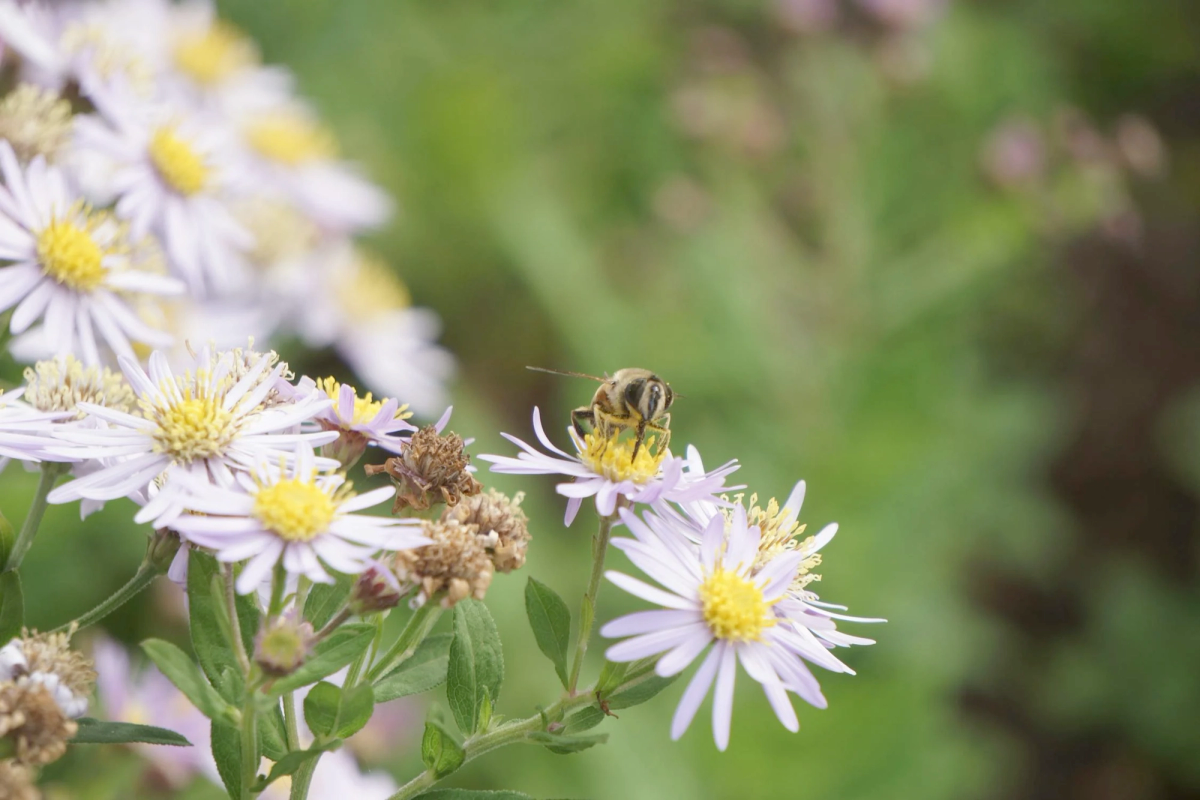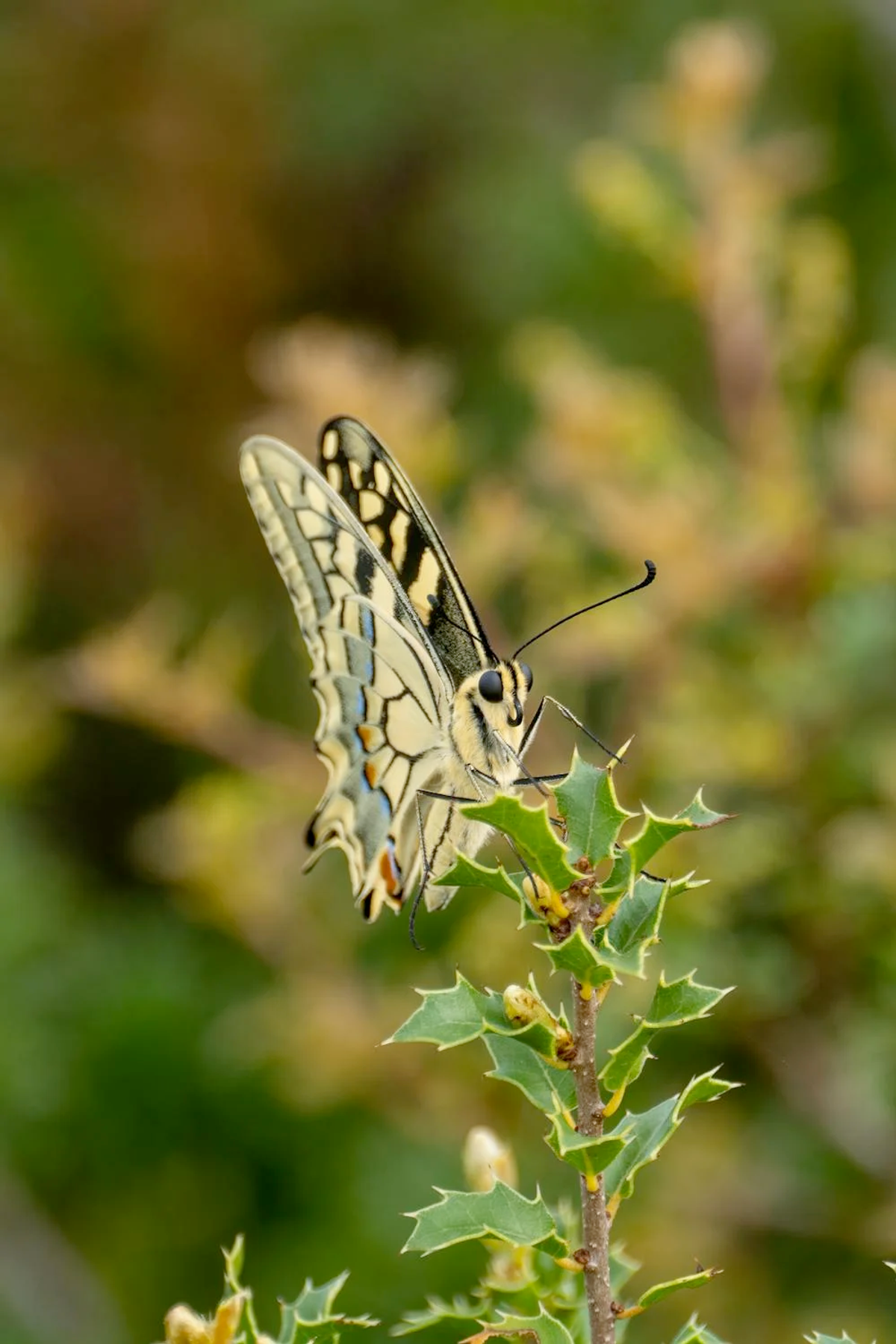Pollinator Conservation: Are Honey Bees Mugging Bees and Native Plants?


The decline of pollinator habitats is a well-known environmental crisis, largely driven by traditional, intensive landscaping practices. However, beyond habitat loss, an unexpected challenge arises in pollinator conservation: competition. While honey bees (Apis mellifera) are often heralded as vital pollinators, they can actually create significant stress on local ecosystems by competing with native pollinators. In some cases, they can be seen "mugging" native bees for pollen, disrupting the delicate balance of local biodiversity.
The Symbiotic Relationship: Humans, Native Pollinators, and Native Plant Species in Local Ecosystems
Ecosystems thrive on balance. Native pollinators, such as bumblebees, sweat bees, mason bees, and butterflies, have co-evolved with regional plant species over thousands of years, forming intricate mutualistic relationships that support biodiversity. These relationships often take the form of mutualistic interactions, where both the plants and pollinators benefit from each other. This mutual relationship ensures that pollinators receive nutrients from the plants in the form of nectar and pollen while simultaneously facilitating plant reproduction.

When humans plant native gardens and reduce their reliance on traditional, chemically intensive lawns, they contribute to a positive feedback loop—one in which native plants provide essential resources for pollinators, and in return, pollinators support plant reproduction, ensuring a flourishing local ecosystem. Home gardens designed with native plants serve as essential refuges for pollinators, particularly in urban and suburban environments where natural habitats are scarce.

However, when honey bees, which are non-native to North America, enter the equation in high densities, they can disrupt this balance. Unlike native bees, which have evolved alongside native plants to maximize pollination efficiency, honey bees are generalists that collect pollen indiscriminately. This can lead to an imbalance where native pollinators struggle to find sufficient resources, and in some cases, honey bees outcompete them for pollen and nectar. Honey Bees are so indiscriminate in their pollinating, they also tend to pollinate badly invasive species, thus exacerbating the impact those already aggressive and unchecked plants can have on an ecosystem.
What is Pollination? The Role of Flowering Plants in Pollinator Ecosystems
Pollination is a fundamental process in the life cycle of most plant species, particularly flowering plants. Pollination services provided by pollinators are essential for the reproduction of a vast number of plant species and crops, contributing significantly to food production and ecosystem health. It involves the transfer of pollen from the male reproductive organ (anther) to the female reproductive organ (stigma) of a plant. This transfer can occur through various means, including self-pollination, wind, water, and animal-mediated pollination. Among these, animal-mediated pollination is particularly significant, with pollinators such as honey bees, native bees, butterflies, and other insects playing a crucial role. As these pollinators forage for nectar or pollen, they inadvertently transfer pollen between plants, facilitating their reproduction and ensuring the continuation of diverse plant species.
The Importance of Pollinators: Insights from the National Research Council
Pollinators are indispensable to the health of ecosystems and the stability of our food supply. According to the National Research Council, pollinators are responsible for pollinating over 75% of the world’s crop species, including essential fruits, vegetables, nuts, and seeds. Without these diligent workers, many plant species would struggle to reproduce, leading to reduced crop yields and compromised food security. Beyond agricultural crops, pollinators also support the reproduction of numerous wild plant species, maintaining the biodiversity that underpins resilient ecosystems. Their role in crop pollination and ecosystem health cannot be overstated, making their conservation a priority for sustaining both natural and human communities.
The Positive Feedback Loop: How Native Planting Strengthens Biodiversity
A well-designed native garden creates a positive feedback loop by reinforcing the natural cycles of pollination, plant reproduction, and wildlife support. Native plants are often chosen for their desirable characteristics, such as drought resistance and the ability to attract specific pollinators. Here’s how it works:
- Native plants provide ideal nectar and pollen sources for native pollinators. Many native plants require specialist pollinators, like certain species of bees, to efficiently reproduce.
- Pollinators contribute to plant health and reproduction. As native pollinators move between flowers, they facilitate cross-pollination, ensuring stronger, more resilient plant populations.
- Native pollination services make massive contributions to crop pollination. Even without the presence of honey bees, those backyard veggies will continue to thrive.
- Healthy plant populations improve soil quality and attract diverse wildlife. Birds, small mammals, and other insects benefit from the increase in plant diversity and stability.
- Stronger ecosystems better withstand environmental changes. Climate resilience improves when diverse native species support each other in their natural habitat.

Traditional Lawn Landscaping vs. Native Garden Design
The conventional American lawn is one of the least environmentally friendly landscaping choices. Typically consisting of non-native turf grasses, traditional lawns require excessive watering, fertilizers, and pesticides, all of which deplete soil quality, increase pollution, and provide little to no habitat for pollinators or other wildlife. Furthermore, traditional lawns do not protect pollinators or other beneficial insects from predators, as they lack the plant diversity needed to support a healthy ecosystem.
In contrast, native garden design:
- Reduces water consumption by incorporating drought-resistant native plants.
- Eliminates the need for chemical fertilizers and pesticides, which harm pollinators.
- Creates year-round habitat for pollinators by including a variety of flowering plants that bloom throughout different seasons.
- Promotes biodiversity by supporting insects, birds, and other wildlife that rely on native plants for survival.
- Provides food sources during the winter months by including plants with seeds and berries that wildlife can eat.
Native Plants vs. Cultivated Plants vs. Invasive Plants
When choosing plants for a pollinator-friendly garden, it’s essential to understand the differences between native, cultivated, and invasive species:
- Native plants have evolved to thrive in local conditions, providing the most suitable food sources for native pollinators. Examples include milkweed (Asclepias spp.), goldenrod (Solidago spp.), and purple coneflower (Echinacea purpurea).
- Cultivated plants (or "cultivars") are selectively bred for aesthetic traits but often lack the same nutritional benefits as their wild counterparts. Some cultivars produce less nectar or pollen, making them less useful to pollinators. Cultivated plants often retain specific traits from their parent plant, which are maintained through methods like vegetative propagation.
- Invasive plants are non-native species that aggressively outcompete native vegetation, reducing biodiversity and altering habitats. Examples include Japanese honeysuckle (Lonicera japonica) and purple loosestrife (Lythrum salicaria), which can crowd out native wildflowers and reduce food sources for native pollinators.
The Future of Pollinator Conservation
Ensuring the future of pollinator populations requires a comprehensive approach that includes habitat protection, reducing pesticide use, and promoting sustainable agricultural practices. One effective strategy is to plant a diverse array of flowers that provide nectar and pollen throughout the growing season. Additionally, adopting integrated pest management practices can help minimize the impact of pesticides on pollinators. By working together to implement these strategies, we can help secure the long-term health of our ecosystems and food supplies. Protecting native pollinators also requires an understanding of their evolution, as their survival depends on long-standing ecological relationships.
Rethinking Pollinator Conservation
While honey bees are essential for commercial agriculture, they are not a substitute for native pollinators. The best way to support biodiversity is to focus on preserving and restoring habitats that allow native pollinators to thrive. By shifting away from traditional lawns and toward native plant landscapes, we can create environments where pollinators flourish—ensuring a healthier, more balanced ecosystem for future generations.

Share this article


